PODCAST A history of the land which would become the Bronx, from the first European settlement to its debut in 1874 as New York’s Annexed District.
The story of the borough of the Bronx is so large, so spectacular, that we had to spread it out over three separate podcasts!
In Part One — The Bronx Is Born — we look at the land that is today’s borough, back when it was a part of Westchester County, a natural expanse of heights, rivers and forests occasionally interrupted by farm-estates and modest villages. Settlers during the Dutch era faced grave turmoil; those that came afterwards managed to tame the land with varying results. Speculators were everyone; City Island was born from the promise of a relationship with the city down south.
During the Revolutionary War, prominent families were faced with a dire choice — stay with the English or side with George Washington’s Continental Army? One prominent family would help shape the fate of the young nation and leave their name forever attached to one of the Bronx’s oldest neighborhoods. Sadly that family’s legacy is under-appreciated today.
By the 1840s, Westchester County was at last connected to New York via a new railroad line. It was a prosperous decade with the development of the area’s first college, a row of elegant homes and some of its very first ‘depot towns.’ Two decades later, the future borough would even cater to the dead — both the forgotten (at Hart Island) and the wealthy (Woodlawn Cemetery).
The year 1874 would mark a new chapter for a few quiet towns and begin the process of turning this area into the borough known as the Bronx.
FEATURING: Many places in the Bronx that you can visit today and experience this early history up close, including Wave Hill, Pelham Bay Park, Woodlawn Cemetery, City Island and more.
The Bowery Boys: New York City History podcast is brought to you …. by you!
We are now producing a new Bowery Boys podcast every two weeks. We’re also looking to improve the show in other ways and expand in other ways as well — through publishing, social media, live events and other forms of media. But we can only do this with your help!
We are now a member of Patreon, a patronage platform where you can support your favorite content creators for as little as a $1 a month.
Please visit our page on Patreon and watch a short video of us recording the show and talking about our expansion plans. If you’d like to help out, there are five different pledge levels (and with clever names too — Mannahatta, New Amsterdam, Five Points, Gilded Age, Jazz Age and Empire State). Check them out and consider being a sponsor.
We greatly appreciate our listeners and readers and thank you for joining us on this journey so far. And the best is yet to come!
In this 1896 Robert Bracklow photograph, a solitary woman stands by the Bronx River, looking almost completely unchanged from how it would have looked when Jonas Bronck saw it.

A 1914 illustration recounting the tale of Jonas Bronck:

Another book illustration, this one of the massacre of Anne Hutchinson and her family.

The Split Rock as it appeared in 1910, with a memorial plaque to Anne and her family and no highways anywhere around it. The rock today has no plaque but the impression of one can still be seen.

An auction map of the Bronx from 1910, highlighting the area of Throg’s Neck which gets its name from Throckmorton or Throgmorton.

The King’s Bridge from an 1856 illustration.

The town of Westchester in the East Bronx, pictured here in 1872. Throg’s Neck is in the lower portion of the map. Today’s neighborhood of Soundview comprises the green portion.
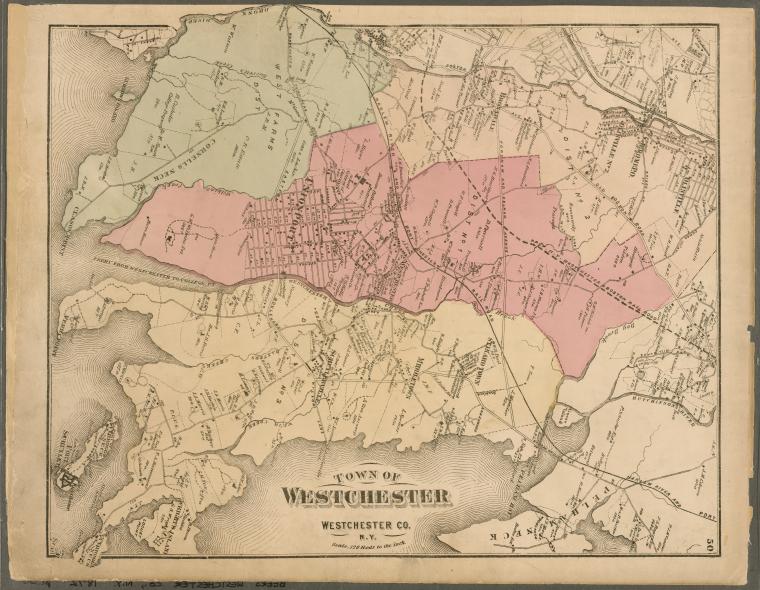
The village of Morrisania, pictured here in 1860, which arose from land owned by the Morrises after the railroad encouraged a row of ‘depot towns.’
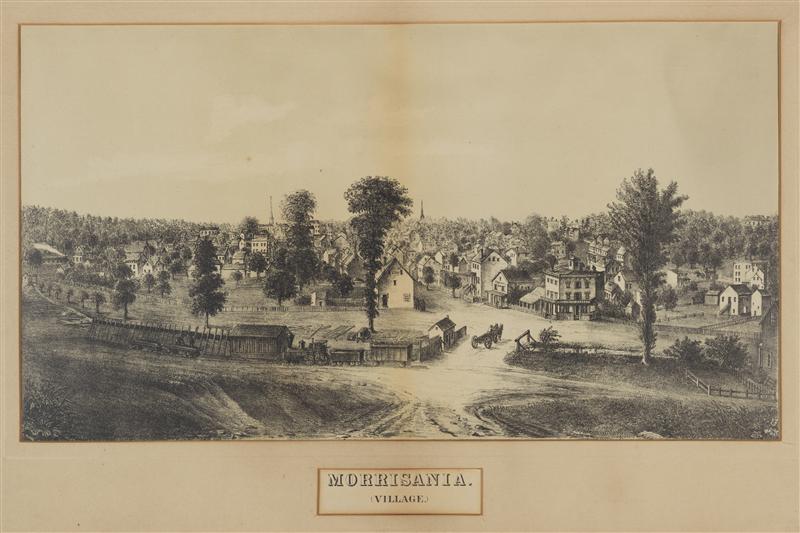
St Ann’s Episcopal Church in Morrisania, where both Lewis and Gouverneur Morris (and Gouverneur’s wife Ann) are buried.

A view of St. Ann’s today:


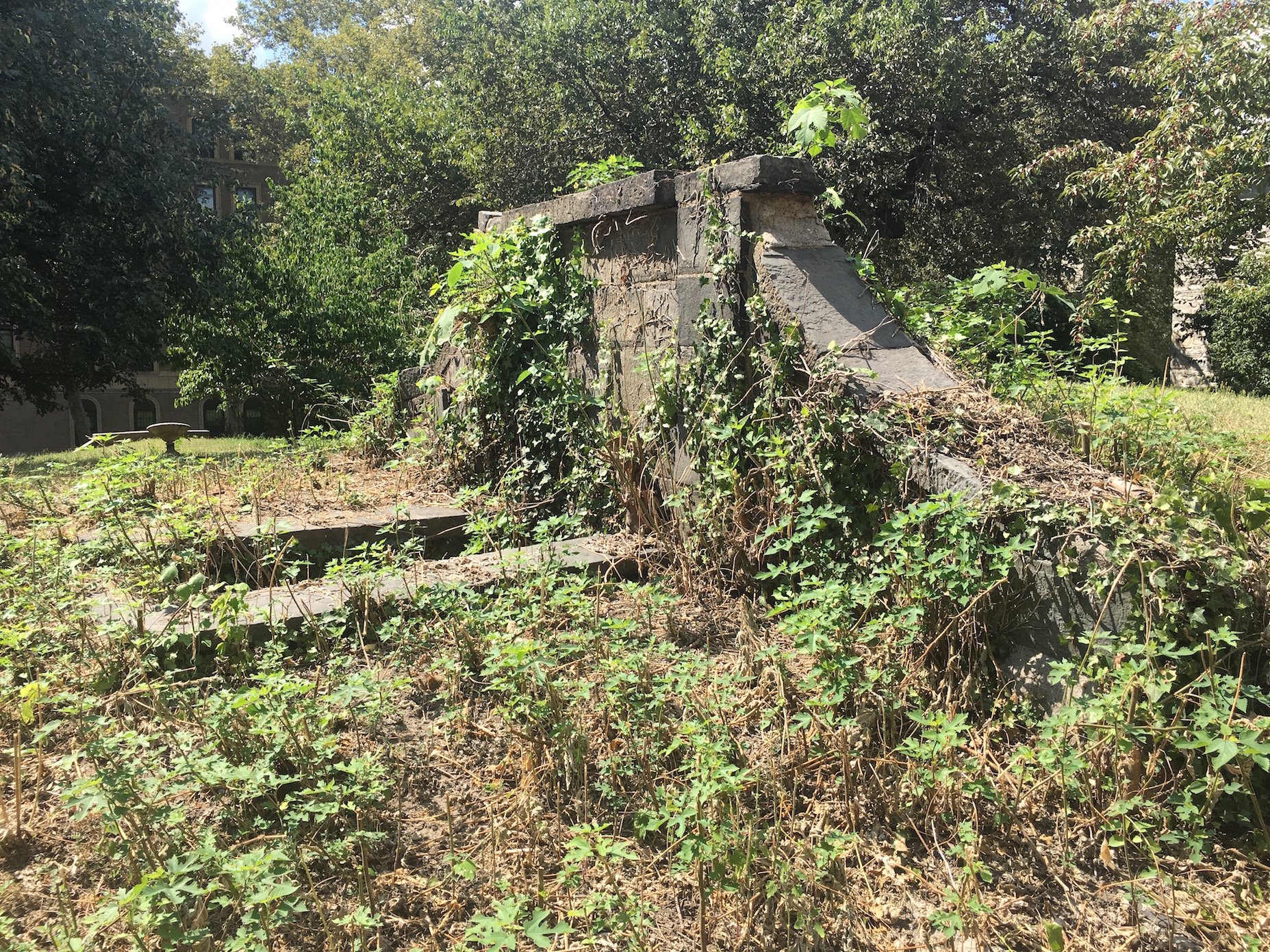
The Van Cortlandt Mansion then (in 1906)…

And today (featuring George Washington’s room):


The old City Island monorail from 1910


The old City Island Bridge, the only way on or off the island that’s not a boat. That remains true to this day, although the bridge is much sturdier-looking today!
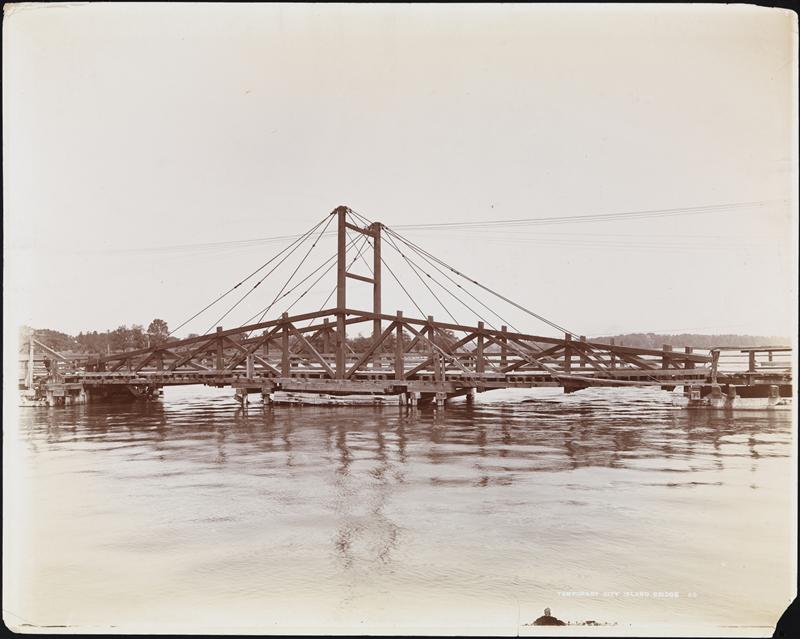
The old City Island Cemetery with Hart Island in the distance.

Breathtaking Wave Hill and the grounds which provide an unbelievable view of the Hudson River and the Palisades.
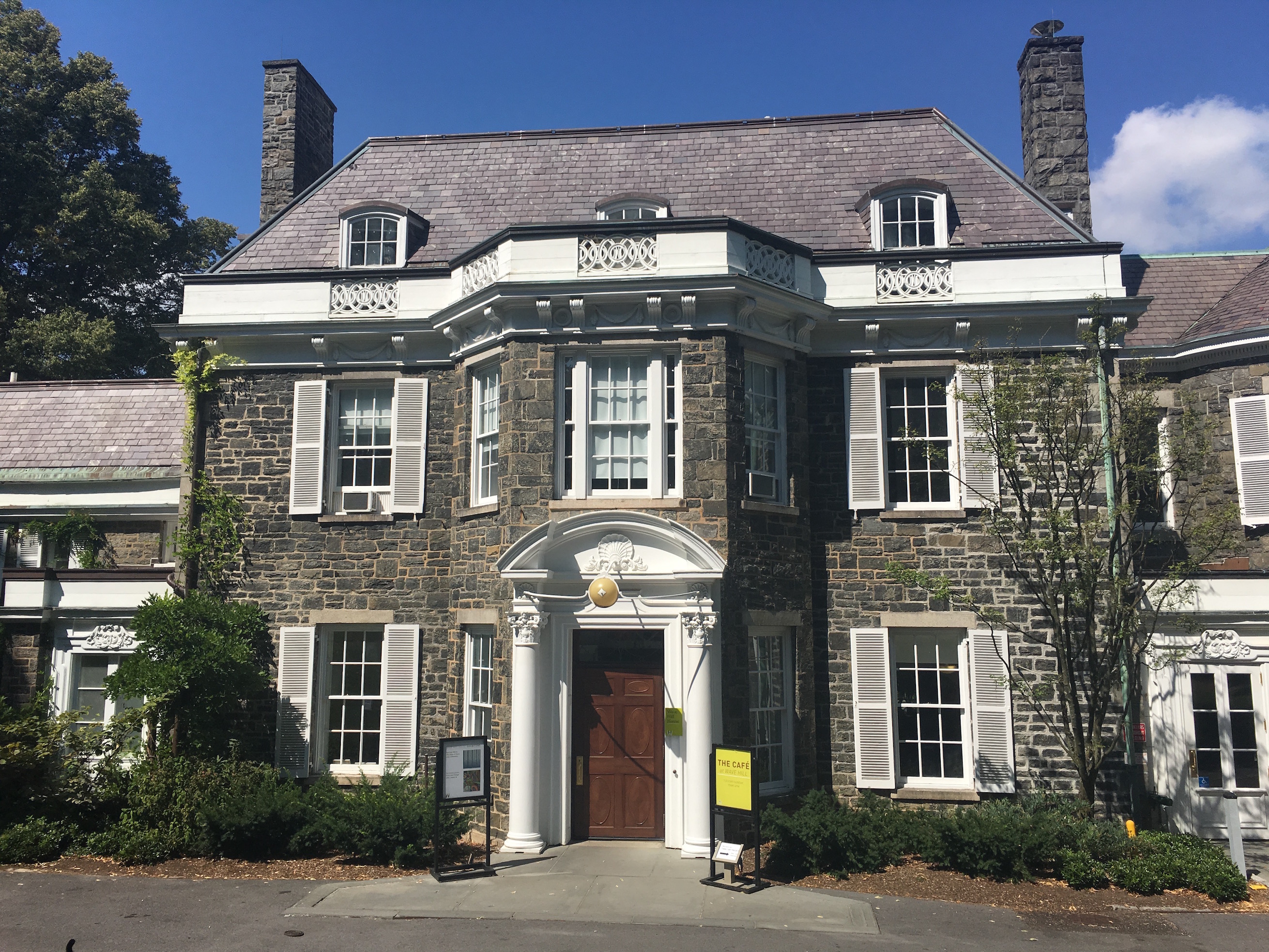

Here’s Tom, getting a peek inside George M Cohan’s mausoleum at Woodlawn Cemetery:

Jerome Park Racetrack where the Belmont Stakes were first run in 1867.

From Harpers Weekly, 1886:

The former (awkward) location of Edgar Allan Poe’s cottage. It has since been moved to the Grand Concourse.


And finally — Gouverneur Morris’ mansion which — believe it or not — stood at the foot of St. Ann’s Avenue until the 20th century.

We want to give a big thanks to the Bronx Historical Society, Wave Hill, Woodlawn Cemetery and St. Ann’s Episcopal Church for helping us with our research. Keep coming back to the blog throughout the month of September as we’ll have additional stories about these places and others.


22 replies on “Bronx Trilogy: The Bronx Is Born — Before It Was A Borough 1638-1874”
Very impressive I didn’t know this about my Bronx thank you for sharing
So much to learn. Thank you, I love this.
What you guys gave placed here is beautiful, breathtaking, and informative!! As I continued reading, I was actually living those very moments…Great posting….I loved it!!
Wow, was born, raised and lived in the Bronx for many years. I loved every minute, but never really knew the history behind it. Very interesting. Thank you!
Hey really this was a great piece you guys did about the bronx. I’ve live in the bronx all my life and really did not know nothing about how the Bronx was originated. I’m impressed and will never trade this borough for no other. Thanks for pitting your time in giving the public this information. Well appreciated from a true Bronx man.
Where I was born in the Bronx it was all farms thus “West Farms”. In 1920 the streets were raised and there was no more farming going on there. After which the street I grew up on they built a 5 story apartment building. My father’s family one of the first to live there.
I lived in a 5 story apt building on Tremont and Bryant ave ..Its still up..1950 Bryant ave…..lived there from 1955 to 1968 …West farms.!!!!! I remember the West Farms Inn on Boston rd and Tremont……That’s where I Grew Up..!!!…Thanks for your interesting post…!!!…..LOL
I like leaning about the Bronx!! Thanks I love my bronx
I am so grateful to you both for your entire podcast series, but I very much appreciate this focus on the Bronx. My mother’s mother was born in a house that sat, I am told, where the Van Cortlandt Lake now sits; my great grandfather kept the horses for the Bronx police.
My ancestors, German and Irish, on both sides, lived throughout the Bronx (from Riverdale to the South Bronx to Crotona Park), and so many are buried at Woodlawn and the old Saint Raymond’s.
Thank you!
My ancestors are buried at St Raymond’s too. Our Irish ancestors lived in Throgs Neck from the early 1800’s onwards. I have alot of history and stories about the area. Names are ‘Roach’, ‘Gore’, Tenety, Barilli, Springstead.
I love learning about the Bronx, never knew any of this.
Thank you so much for all this wonderful information on the place of my birth my parents lived in the South Bronx at 824 Beck St I was born in the old Lincoln Hospital I love the Bronx I’ve lived in lots if different neighborhoods in the,Bronx and loved every single one of them Iam truly looking forward to more of your Bronx trilogy my heartfelt thankyou yours truly a true Puerto Rican Bronx Girl Frances
Many thanks for a great podcast from a displaced Bronxite now living in Shanghai! Regarding the use of the article in “T/the Bronxâ€, in my high school elective course “History of New York†we were told that the Bronck family used to throw great parties so when people would go up from Manhattan they would go up to “the Bronck’s” and thus the origin of the name. Guess nobody’s come across any historical diary entries or such that would support one or the other?
I’ve also heard it was called “The Bronx” because the Broncks lived there, but I’m assuming the Bowery Boys know the score.
It’s kinda sorta the same thing. The ‘land of the Broncks’ or ‘the river of the Broncks’ — it all traces back to their said occupation of the property.
I was interested in the Phillips family. Do you know if Philipse family (and their Manor House in Yonkers) is any relation? Oddly the heir of Philipse still own the mineral rites to a large number of properties, at least in Putnam County. This right was in include in the deed when I purchased a home in Mahopac (the Town of Carmel).
I grew up and lived in the Bronx in the ,1950 s ,60s ,70 s , its a part of me…I love to read the history on it ,and see the photos of the old days. .I lived in the West Farms area as a kid, we used to go into the Bronx Zoo when it was closed ,Ride our bikes around and look at the animals….I also lived in the Belmont , University Heights , Pelham Parkway Areas , and the area around Webster Ave and 204 St………… What a wonderful place, so interesting so many different cultures …Had its up s and downs ..But its always going to have a special place in my Heart….I will go to my grave happy to have been a part of this beautiful place in New England for a part of my life..It made me strong and prepared me for the world ,ahead of the game,..I wish I could grow up all over again in the Bronx…..LOL
You took the exact words right out of my mouth !! Always say,we grew up 2 steps ahead because we grew-up in the Bronx, that’s the truth Robert….? I’m from Poe park area, 194th n Valentine, 2685#
Being a native Bronxite and a city planning and history enthusiast, I must say it is admirable that you all have chosen to deviate from the mainstream boroughs and to so comprehensively recount the story of The Bronx. Because of its stigma, the history of The Bronx and even just the general information and specifics of the borough are so often overlooked.
Despite my great interest in my hometown, it has been very difficult to discover the borough’s history, and aside from the many publications by Bronx historian Lloyd Ultan, there are so little ways in which this history and the borough itself is presented in a manner that truly engages the audience. This podcast has changed this now.
I must say that I do question the chronology of the history in the way that you both recount it, as I have asked myself what occurred when. Still, I don’t find this to be a deterrent.
It would be great if you can somehow integrate the history of many individual neighborhoods into the coming episodes, as you have already. Although I am far too familiar with the history and have very much lived through parts of it, I am looking forward to the segment on Robert Moses’s impact on the northernmost borough.
Great work.
I have always tried to follow Bronx History. This past weekend I toured the grounds of the Bartow Pell Mansion.
It is truly amazing how much of this country’s history originated here.
Looking forward to thw next installment.
Very informative and interesting. I am a lifelong Bronxite who was born, educated and educated many children and adults who have lived and taught school in the Bronx. I integrated a history and cultural theme into my teacher education course st Lehmsn College This would have been invaluable. Many of those teachers came to the Bronx from all over and were filled with apprehension and misconceptions about the botough, it’s history and people
If you haven’t already, connect with the African American History Project at Fordhsm University with its emphasis on Music
Congratulations!
This was very interesting. Most of the place I never knew.m
Thank you